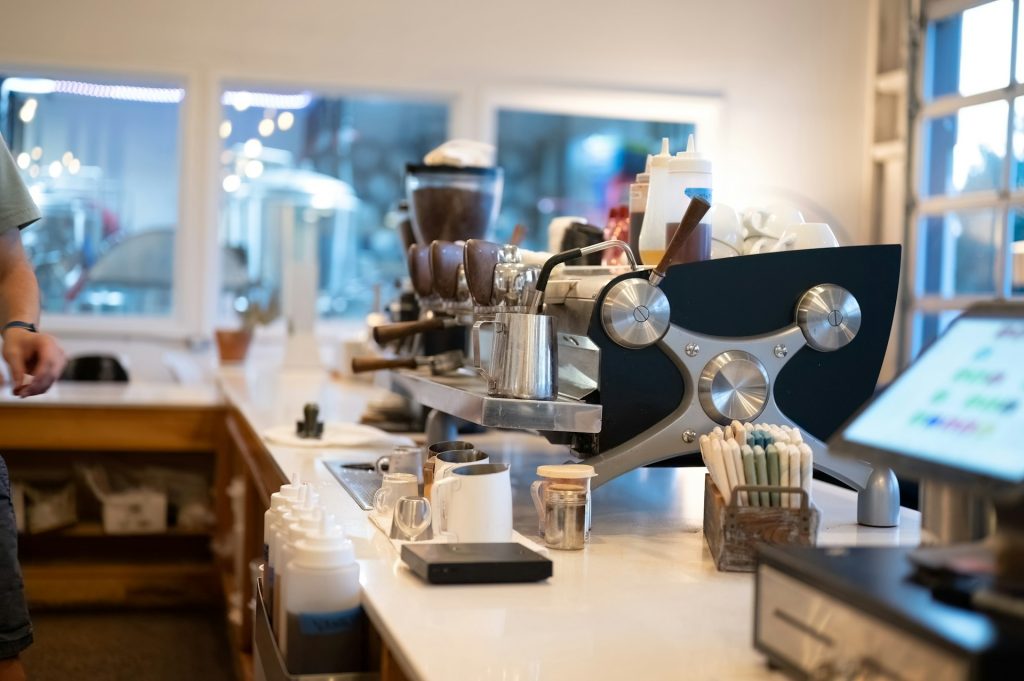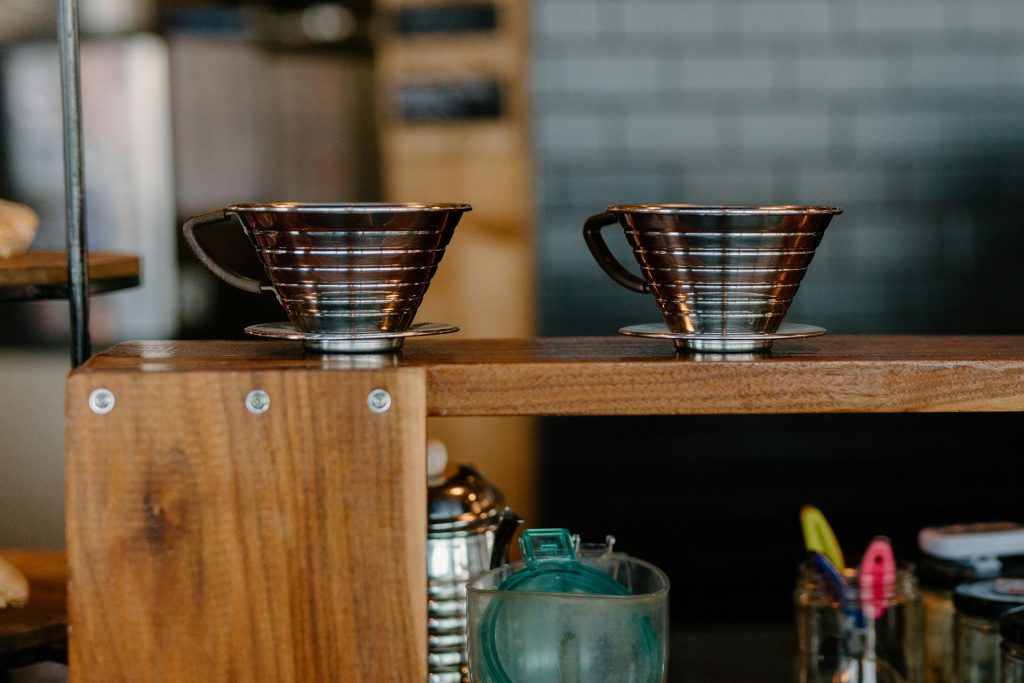Table of Contents
How did a simple cup of coffee grow from a local tradition to a global obsession? What started as an energizing brew in the hills of Ethiopia has transformed into a cultural mainstay, influencing art, politics, daily routines, and even social media trends. Coffee culture has come a long way, and its story is as rich as the brew itself.
Let’s look at how coffee evolved from a humble bean to a global symbol of connection and creativity.
Origin of Coffee
The story of coffee begins in Ethiopia, where legend has it that a goat herder named Kaldi discovered its energizing effects. After noticing his goats dancing energetically after eating berries from a certain plant, Kaldi tried the berries himself and experienced a newfound vigor. Word of the “magic” beans spread, and coffee was soon being cultivated and traded across the Arabian Peninsula.
In Yemen, coffee became more than just a drink—it was a ritual. Sufi monks used it to stay awake during long nights of prayer, and the practice quickly gained popularity. Coffeehouses, known as qahveh khaneh, soon emerged as spaces where people gathered to enjoy the drink and discuss poetry, politics, and philosophy. By the 15th century, coffee had woven itself into the fabric of life in the Islamic world, earning its nickname, the “wine of Araby.”
This early history laid the foundation for coffee’s cultural significance, showing that from the very beginning, it was more than just a drink—it was a symbol of energy, connection, and inspiration.
The Rise of Coffeehouses

As coffee spread, so did the spaces where people gathered to drink it. Coffeehouses first emerged in the Middle East, particularly in cities like Mecca and Istanbul, where they became known as “schools of the wise.” These were not just places to grab a quick drink—they were hubs for intellectual discussion, debate, and storytelling.
By the 17th century, coffeehouses had taken Europe by storm. In England, they earned the nickname “penny universities” because a cup of coffee cost a penny, and the stimulating conversations inside were as enlightening as a university lecture. Writers, politicians, and artists flocked to these spaces, which played a key role in shaping cultural and political movements like the Enlightenment.
The tradition of coffeehouses as social and intellectual hubs continues today, proving that coffee has always been about more than just caffeine.
How Coffee Went Global
Coffee’s journey to becoming a global commodity began with trade and colonization. European powers transported coffee plants to colonies in South America, Southeast Asia, and the Caribbean, where plantations thrived in the tropical climate. Brazil emerged as a coffee powerhouse, becoming the largest producer in the world—a title it still holds today.
The Dutch were among the first to spread coffee cultivation, establishing plantations in Java, which led to the term “Java” becoming synonymous with coffee. French missionaries introduced coffee to Vietnam, now a major player in coffee production. Meanwhile, the British brought coffee to Jamaica, leading to the creation of the world-famous Blue Mountain coffee.
As coffee production expanded, so did its reach. By the 18th century, coffee had become a daily staple across Europe and the Americas. It wasn’t just a drink for the elite but a drink for everyone, fueling revolutions, industries, and creativity. Its spread reflects the enduring human desire for connection and energy—two things coffee has always provided in abundance.
The Modern Coffee Revolution
The 20th century brought a shift in coffee culture. Instant coffee became popular during World War II, offering convenience for soldiers and busy households. But by the late 20th century, coffee drinkers began demanding more than just convenience—they wanted quality.
The specialty coffee movement was born, focusing on sourcing high-quality beans, roasting techniques, and artisanal brewing methods. Coffee brands like Starbucks ushered in a new era of café culture, making coffee shops the go-to spots for everything from meetings to first dates. By the 1990s, ordering a latte or cappuccino had become a lifestyle choice, not just a drink order.
Today, the third wave of coffee culture has taken this obsession even further, celebrating coffee as an art form. From single-origin beans to pour-over brews, coffee lovers are more informed and passionate than ever.
How Technology Shaped Coffee Culture

The way we brew and share coffee has been transformed by technology. The invention of the espresso machine in the late 19th century revolutionized coffee preparation, allowing baristas to create the creamy, concentrated shots we now associate with lattes and cappuccinos. Home brewing innovations like the French press, Chemex, and Aeropress brought café-quality coffee into our kitchens.
Social media has also played a massive role in modern coffee culture. Instagram turned latte art into a global trend, with baristas creating intricate designs that are equal parts coffee and canvas. Café aesthetics—think minimalist interiors, rustic wooden tables, and perfectly lit cups of coffee—have become a staple of online culture, turning coffee shops into must-visit destinations for influencers and enthusiasts alike.
Coffee as a Cultural Identity
What makes coffee truly unique is how it reflects the culture of the people who drink it. In Italy, espresso bars are an integral part of daily life, where locals stand at counters sipping strong shots of coffee. In Japan, the kissaten (traditional coffee houses) offer a serene space to enjoy hand-dripped brews, often served with meticulous care.
Other countries have their own unique rituals: In Turkey, coffee is not only a drink but a tradition that includes fortune-telling from the grounds left in the cup. In Sweden, fika is a cherished break for coffee and pastries, symbolizing a moment to slow down and connect with others.
These diverse traditions highlight how coffee has become more than just a drink—it’s a way to express culture and community.
The Sustainability Movement in Coffee

In recent years, coffee culture has evolved to include a greater emphasis on sustainability. With millions of cups consumed daily, the environmental and social impact of coffee production is undeniable. Ethical sourcing and fair trade initiatives have gained momentum, ensuring that farmers are paid fairly for their work and that coffee is grown using environmentally friendly practices.
More and more coffee drinkers are also choosing reusable cups and supporting local roasters who prioritize sustainability. This shift shows how coffee culture is adapting to modern values, proving that even the most beloved traditions can evolve to meet the challenges of the future.
More Than Just a Beverage

Coffee is so much more than a pick-me-up. It’s a ritual, a conversation starter, and a global symbol of connection and culture. From its humble beginnings in Ethiopia to its current status as a worldwide obsession, coffee’s journey is a testament to its power to bring people together.

I’m Audrey, a dedicated mother of teenagers with an insatiable love for coffee. On BeanBrewLove.com, I intertwine my need for caffeine with reflections on life. Whether expressing a nostalgic sentiment or injecting a hint of sarcasm, my blog is a reservoir of coffee culture, brewing techniques, and global coffee reviews.




